#ammonite fossil Whitby
Explore tagged Tumblr posts
Photo

Nodicoeloceras crassoides Ammonite Fossil - Whitby, Yorkshire UK - Jurassic, Upper Lias - COA
Offered for sale is a striking Nodicoeloceras crassoides ammonite fossil, discovered in the world-renowned fossil beds of Whitby, North Yorkshire, UK. This specimen dates from the Lower Jurassic period, specifically the Toarcian Stage (approx. 183–174 million years ago), and was formed within the fossil-rich Upper Lias geological formation.
This fossil comes from the prestigious Alice Purnell Collection, recognised for its scientifically important and high-quality fossils. The photo shows the exact fossil you will receive, hand-selected for its preservation, clarity, and intricate shell detail.
Geological & Species Details:
Species: Nodicoeloceras crassoides
Type: Ammonite (extinct marine cephalopod)
Age: Lower Jurassic (Toarcian Stage)
Formation: Upper Lias
Locality: Whitby, North Yorkshire, UK
Key Features:
100% Genuine Fossil – Comes with our Certificate of Authenticity.
Well-Preserved Shell Structure – Distinctive ribbing and detail.
From the Alice Purnell Collection – Renowned for expertly curated fossils.
Ideal for Fossil Collectors, Education, or Display
Scale Rule / Cube = 1cm – Please see photo for full measurements.
Nodicoeloceras crassoides is a highly sought-after species due to its characteristic broad whorls and strong ribbing. It represents an important part of Early Jurassic marine ecosystems and is a must-have for collectors and palaeontology enthusiasts alike.
Don’t miss out on owning this authentic piece of Jurassic history—add this Nodicoeloceras crassoides ammonite to your collection today!
#Nodicoeloceras crassoides#Nodicoeloceras ammonite#Yorkshire ammonite fossil#Whitby fossil#Lower Jurassic ammonite#Upper Lias fossil#Jurassic marine fossil#British fossil ammonite#ammonite from Whitby#fossil with certificate#authentic ammonite#Alice Purnell Collection#ammonite gift#UK geology fossil#ammonite ribbing#paleontology specimen#fossil collector item#ammonite fossil Whitby#Jurassic fossil UK
0 notes
Text


Saint Hilda, the first Abbess of Whitby.
Recent visit to chester cathedral England inspired me to do some artwork on the patron saints of major medieval towns and cities.
Saint Hilda born 617 AD was a very important figure at whitby Abbey as it was central to the early christian Anglo Saxon World.
Legend has it she cast the snakes of the devil of the coast with the heat of her anger, which then turned the snakes into stone once they were cast off the land and down the cliffs. As whitby has very old prehistoric cliffs and coastlines, it's unsurprising this legend was used in a way to explain the ammonite fossils being the snakes turned to stone by Saint Hilda during the early middle ages. Thought it was quite a cool story and local bit of history so I done this piece inspired by it.
#artwork#art#gothic#illustration#painting#medieval#christianity#history#medieval art#penart#english#english folklore#british folklore#church#chester
16 notes
·
View notes
Text
THROWBACK THURSDAY: SNAKESTONES
St. Hilda's Spell
Once upon a time in 7th century England, the Saxon abbess, St. Hilda, was charged with founding a new abbey in Whitby Yorkshire.

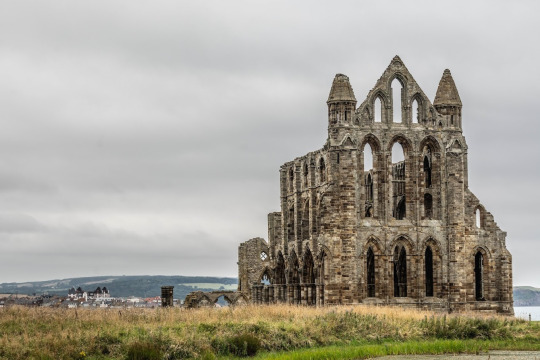
However, upon her arrival she discovered the place was infested with snakes!
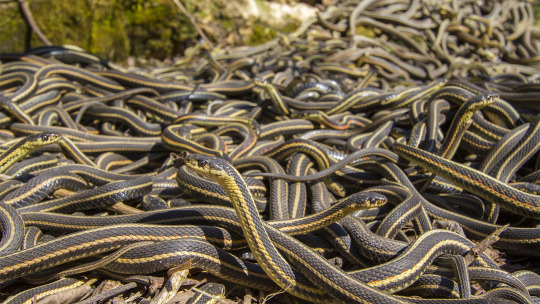
The evil serpents had to be removed before she could have a holy building built. So, she cast a spell that turned them to stone and then she tossed them off the cliffs.

These snakestones were found all over the beaches of Yorkshire, coiled tightly and missing their heads. Folks would collect them and add heads to them to sell in street markets.
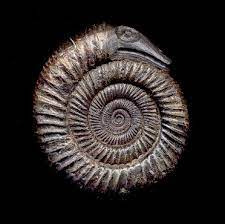
We now call these snakestones Hildoceras in honor of St. Hilda. Nice case of mistaken identity, huh?
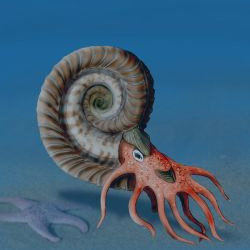
If you want to read more stories involving ammonites, check out this cool link:
10 notes
·
View notes
Text
Then, having strayed and gazed their fill, They closed around the fire; And all, in turn, essayed to paint The rival merits of their saint, A theme that ne’er can tire A holy maid; for, be it known, That their saint’s honour is their own.
Then Whitby’s nuns exulting told, How to their house three barons bold Must menial service do; ... And how, of thousand snakes, each one Was changed into a coil of stone When holy Hilda prayed; Themselves, within their holy bound, Their stony folds had often found.
Nor did Saint Cuthbert’s daughters fail To vie with these in holy tale; His body’s resting-place of old, How oft their patron changed, they told; How, when the rude Dane burned their pile, The monks fled forth from Holy Isle; O’er northern mountain, marsh, and moor, From sea to sea, from shore to shore, Seven years Saint Cuthbert’s corpse they bore.
This is the part of Marmion where I really started to love the poem, and it's still one of my absolute favourite parts. It hearkens back to the ancient sagas, where heroes contested with each other in boasting about their deeds of prowess. In Beowulf, a side character, Unferth, challenges Beowulf by running down one of his past deeds, and Beowulf bests him by describing, in detail, his heroic achievements; it can be summarized as Unferth saying "You're not all that" and Beowulf returning, "Yes, I am all that." Another one in a different style is when, in the Kalevala, the young man Lemmenkainen unwisely challenges the ancient Vainamoinen in, essentially, an intellectual duel of telling the things they know - Lemmenkainen's knowledge and experience is trivial next to Vainamoinen's, and he is utterly worsted (summary: "You know nothing, kid".) You could consider this type of verbal duel the ancestor of the modern rap battle.
And this section of Marmion feels like that ancient poetic device being brought forward into a an entirely different setting, era, and applied to an extremely unlikely group of people: two sets of nuns from different convents. But the basic pattern of it, each setting forth in turn the great achievements of their saints, is essentially similar. The poem is set in the 1500s, the early modern era, and much of its setting and style (knights, jousts, and chivalry) hearkens back to the medieval times, but this moment connects its to a far older tradition (ironically, one connected to the same Vikings whose sack of Lindisfarne is mentioned).
The realization that, as noted by @animate-mush, the "serpents changed to stone" by St. Hilda are in fact fossil ammonites, just puts the finishing touch on this fantastic section.
7 notes
·
View notes
Text
Number 6 is a Snakestone!!
Ammonites are common in Whitby, England. When it became a tourist hub in the 1800s, locals took advantage of the local myth of how the ammonites were snakes with their heads chopped off and carved snake heads into the ammonites to sell.
I got one when I visited Whitby from fossils-uk.com.





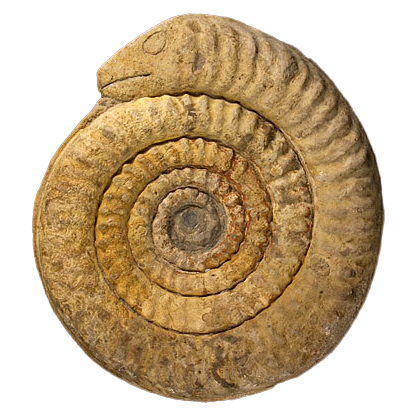
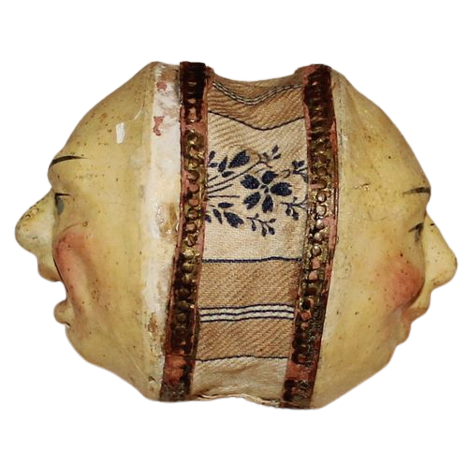
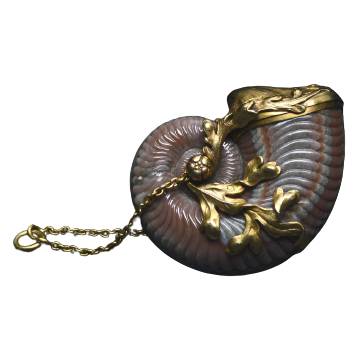
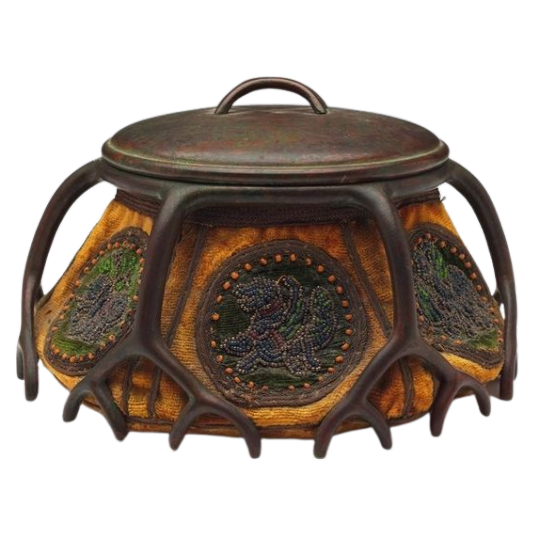
Random PNGs, part 165.
(1. Eye button by Jari Sheese, 2. Assemblage by Ellen Rixford, 3. Book by Daniel Essig, 4. 70s tufted rug, 5. Cornea globosa medical model, 6. Snake carved ammonite (?), 7. 1800s two-sided squeak toy, 8. Perfume bottle from 1900-1910, 9. 1800s pot or inkwell (?))
2K notes
·
View notes
Photo

#fossils #ammonite #crocodile #whitby #Jurassic #geology #palaeontology https://www.instagram.com/p/BuL6fwfg9TM/?utm_source=ig_tumblr_share&igshid=19owahf1e30p9
1 note
·
View note
Photo
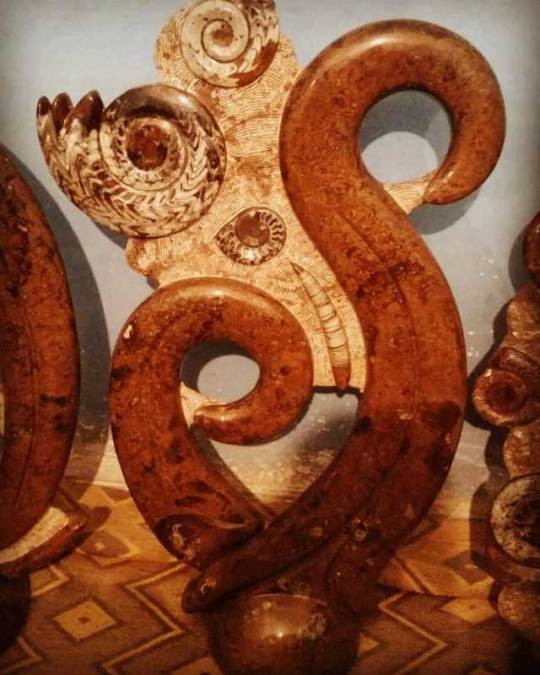
Welcome to Ninetours Tours Designer in Morocco🇲🇦🇲🇦🐪🐪🐪 Fossils explore in our tours For booking, contact us: 🌐 www.ninetours.com 📧 [email protected] #natural #nature #fossil #fossils #ancient#animals #art #ammonite #ammonites #dinosaur#awesome #minerals #paleontology #sea #news#whitby #earth #geologist #dorset #geology#charmouth #palaeontology #jurassic #yorkshire#coast #instagram #beach #stone #rock #fossilwatch #handmade #handmadehome #traveltoexplore #centurytravel https://www.instagram.com/p/Bp5rUugFitQ/?utm_source=ig_tumblr_share&igshid=1xd7xwt9oleyu
#natural#nature#fossil#fossils#ancient#animals#art#ammonite#ammonites#dinosaur#awesome#minerals#paleontology#sea#news#whitby#earth#geologist#dorset#geology#charmouth#palaeontology#jurassic#yorkshire#coast#instagram#beach#stone#rock#fossilwatch
1 note
·
View note
Text
Regarding your tags: yes, exactly! this part is the two groups of nuns each telling about how their saint is the most awesome ever! I’ve recently found a copy of the poem that has Walter Scott’s copious notes on some of his references, which clears them up a bit. The Whitby nuns’ part that you quoted is them boasting about theee different things.
They told how in their convent-cell / A Saxon princess once did dwell / The lovely Edelfled
The daughter of an ancient Saxon king in the 600s AD who was a nun in the convent.
And how, of thousand snakes, each one / Was chang’d into a coil of stone / When holy Hilda prayed / Themselves, within their holy bound / Their stony folds had often found.
The claim of St. Hilda turning snakes to stone is based on many people finding things that looked like coiled-up snakes turned to stone in the rocks of Whitby around the abbey - these are in fact fossil ammonites, an ancient sea-creature! Which I think is extremely cool. Walter Scott’s way of saying it is rather funny: “The relics of the snakes which infested the precincts of the convent, and were, at the abbess’s prayer, not only beheaded, but petrified, are still found about the rocks, and are termed by Protestant fossilists Ammonitae.”
They told how sea-fowls’ pinions fail / As over Whitby’s towers they sail / And, sinking down with flutterings faint / They do their homage to the saint.
This is a legend that migrating sea-birds flying over Whitby Abbey all immediately land when they reach the Abbey, as a sign of honour to St. Hilda’s holiness. The more obvious explanation is that migrating birds who have been flying over the sea and have just reached land often stop there and rest.
For the nuns of Lindisfarne: They’re telling of St. Cuthbert, who lived first in Lindisfarne and then as a hermit on one of the more-isolated nearby islands, where he died. He was initially entombed in Lindisfarne. It was considered a sign of his holiness and saintly powers that a variety of miracles or signs indicated where he wanted his bones buried after the the monks of Lindisfarne were driven from the island by Viking raids and brought his bones with them. After a great many travels between different places, before the carriage carrying the bones was finally said to have become immovable in the place that later became Durham Cathedral. So it’s not Lindisfarne itself they’re boasting about, but the supposed set of miracles relating to St. Cuthbert’s bones.
Ok, so I admit that I'm a little bit confused with the storyline told from the canto XII to the canto XVI when the Saint Hilda nuns finally arrived in Lindisfarne, and are meeting the local nuns there.
Yes the first stanzas tell how the Saint Hilda nuns walked through Lindisfarne to satisfy their curiosity about this new place, all clear with sharp sea-breeze. The confunsion comes when they start to tell the tales of their Saints.
And all, in turn, essayed to paint The rival merits of their saint, A theme that ne’er can tire A holy maid; for, be it known, That their saint’s honour is their own.
This is the start of a comparison of what I can understand is the Saint they dedicated their life to, and their deeds to gain the title of saint. This is where I got confused since I misread the structure of the tales, and somehow forgot that the nuns of Whitby were the Saint Hilda nuns, and the nuns of Lindisfarne were the Saint Cuthber nuns. I mixed them in between the lines.
However, this is where I got confused.
They told, how in their convent cell A Saxon princess once did dwell, The lovely Edelfled. And how, of thousand snakes, each one Was changed into a coil of stone When holy Hilda prayed; Themselves, within their holy bound, Their stony folds had often found. They told, how sea-fowls’ pinions fail, As over Whitby’s towers they sail, And, sinking down, with flutterings faint, They do their homage to the saint.
Is this part about how the nuns themselves are safe within the walls of their church along with the protection of Saint Hilda while telling how her prayers turned a thousand snakes into stone? Or are they talking about how by praying to Saint Hilda, and paying homage to her, then they become as strong as Whitby walls?
Nor long was his abiding there, For southward did the saint repair; Chester-le-Street, and Rippon, saw His holy corpse, ere Wardilaw Hailed him with joy and fear; And, after many wanderings past, He chose his lordly seat at last, Where his cathedral, huge and vast, Looks down upon the Wear: There, deep in Durham’s Gothic shade, His relics are in secret laid; But none may know the place, Save of his holiest servants three, Deep sworn to solemn secrecy, Who share that wondrous grace.
On the other very confused hand, the nuns of Lindisfarne did not tell the tales of Saint Cuthbert, but how his corpse then what I can assume bones are resting in Lindisfarne now. And that makes the site on itself holy? I do understand how the presence of the remains of a saint can purify, and bless a place, but the way the nuns explained it was very roundabout which is something that I expect.
7 notes
·
View notes
Photo

Among the most plentiful fossils along the Yorkshire coast are the ammonites. Specimens can be found ranging from half an inch in diameter to over twenty inches, 1936. Courtesy of Whitby Museum. From "Natural History". https://www.instagram.com/p/CYpHB5itpW2/?utm_medium=tumblr
143 notes
·
View notes
Photo

Peronoceras perarmatum Ammonite Fossil - Kettleness Whitby, Jurassic UK - Genuine w/ COA
A superb specimen of Peronoceras (Catacoeloceras) perarmatum ammonite fossil, found at Kettleness, near Whitby, North Yorkshire, UK. This stunning ammonite comes from the Upper Lias rock layers of the Lower Jurassic, dating back roughly 183 to 174 million years to the Toarcian Stage.
This specimen is part of the distinguished Alice Purnell Collection, a trusted source of genuine, high-quality fossils. The listing features the exact fossil you will receive, meticulously chosen for its preservation, fine ribbing, and scientific value.
Geological & Species Details:
Species: Peronoceras (Catacoeloceras) perarmatum
Type: Ammonite (extinct marine mollusc, cephalopod)
Age: Lower Jurassic (Toarcian Stage)
Geological Formation: Upper Lias
Locality: Kettleness, Whitby, North Yorkshire, UK
Key Features:
100% Genuine Fossil – Backed by a Certificate of Authenticity.
Excellent Ribbed Preservation – Strong, ornate shell ornamentation typical of the species.
From the Alice Purnell Collection – A well-known and reliable fossil source.
Ideal for Collectors, Educational Use, or Display
Scale Rule / Cube = 1cm – Please view the photo for full size reference.
This beautiful example of Peronoceras perarmatum represents the remarkable marine life of the Early Jurassic seas. Known for their heavily ribbed and often spined shells, these ammonites are a favourite among collectors and scholars alike.
Don’t miss the opportunity to add this rare and scientifically important specimen to your collection—an exceptional ammonite with provenance and quality.
#Peronoceras perarmatum#Catacoeloceras ammonite#Yorkshire ammonite fossil#Whitby fossil#Kettleness fossil#Upper Lias ammonite#Lower Jurassic fossil#Jurassic ammonite UK#British fossils#ammonite with COA#Alice Purnell Collection#fossil collector item#UK geology fossil#authentic ammonite fossil#ammonite gift#Jurassic marine fossil#ammonite ribbed fossil#fossil from Kettleness#ammonite fossil Whitby
0 notes
Photo

The Rare Jurassic Crocodile - Mystriosaurus. 🐊 Back in the #Jurassic era, a marine #crocodile like this would have swam in the ocean with #plesiosaurs and #ichthyosaurs, hunting prey such as #fish and #ammonites. 🐠 ��� 🦑
This #fossil was found on the Yorkshire Coast of Britain, at a site known as Runswick Bay. It was found on 6th June 1960 in the Upper Lias of the Whitby Mudstone Formation. ⛰
.
Follow @neojurassica to see more #prehistoric wonders! 🦕
.
🖥 www.neojurassica.com
🦖 Dinosaur Specialists
🦴 Genuine Fossils
⚙️ Display Customisation
🚚 Free UK Delivery
✈️ International Delivery
.
#croc #crocodiles #gator #crocodileskull #skull #fossils #dinosaur #dinosaurs #extinct #evolution #tropical #natire #naturalhistory #history #archaeology #paleontology #fossilfriday #biology #geology #science #jurassicpark #neojurassica (at Yorkshire)
https://www.instagram.com/p/CMhcpeSp8ny/?igshid=c7z9pre94gl0
#jurassic#crocodile#plesiosaurs#ichthyosaurs#fish#ammonites#fossil#prehistoric#croc#crocodiles#gator#crocodileskull#skull#fossils#dinosaur#dinosaurs#extinct#evolution#tropical#natire#naturalhistory#history#archaeology#paleontology#fossilfriday#biology#geology#science#jurassicpark#neojurassica
5 notes
·
View notes
Photo

"Dactylioceras commune fossil ammonite (Whitby Formation, Lower Jurassic; Yorkshire coast, England)" by James St. John is licensed under CC BY 2.0.
0 notes
Video
yorkshire.fossils This gorgeous sutured ammonite section was just sat in a rockpool on a sandy beach near Whitby UK! 🇬🇧 We often leave fossils for others to find but we couldn’t resist bringing this one home to our own collection
71 notes
·
View notes
Photo

“This is a beautiful Dactylioceras ammonite with a snake's head carved into the ammonite. English folklore tells of the legend of Saint Hilda of Whitby, who cleared the area of snakes by severing their heads with a whip and throwing their remains over the cliffs. To perpetuate the legend, local craftsmen have for centuries carved snake heads into the local fossil ammonites. Snakestones have been recorded from at least Viking times, and in Medievel England, were prized for medicinal puroposes and charms. This Snakestone shows the inner coils extremely well, and the natural coloration is quite striking. This is a unique item that has been part of English folklore for over a thousand years. (Comes with a presentation box and printed legend.)”
1 note
·
View note
Photo

Lovely little #Dactylioceras #ammonite that has polished up beautifully. :) #Fossils #geology #palaeontology #Whitby #yorkshirecoast
16 notes
·
View notes
Photo

Ammonite Fossil taken at Whitby Abbey... . . . . . #whitby #whitbyabbey #yorkshire #fossil #fossils https://www.instagram.com/p/B0VtX4ahKN6/?igshid=1gt7r9ti21667
0 notes